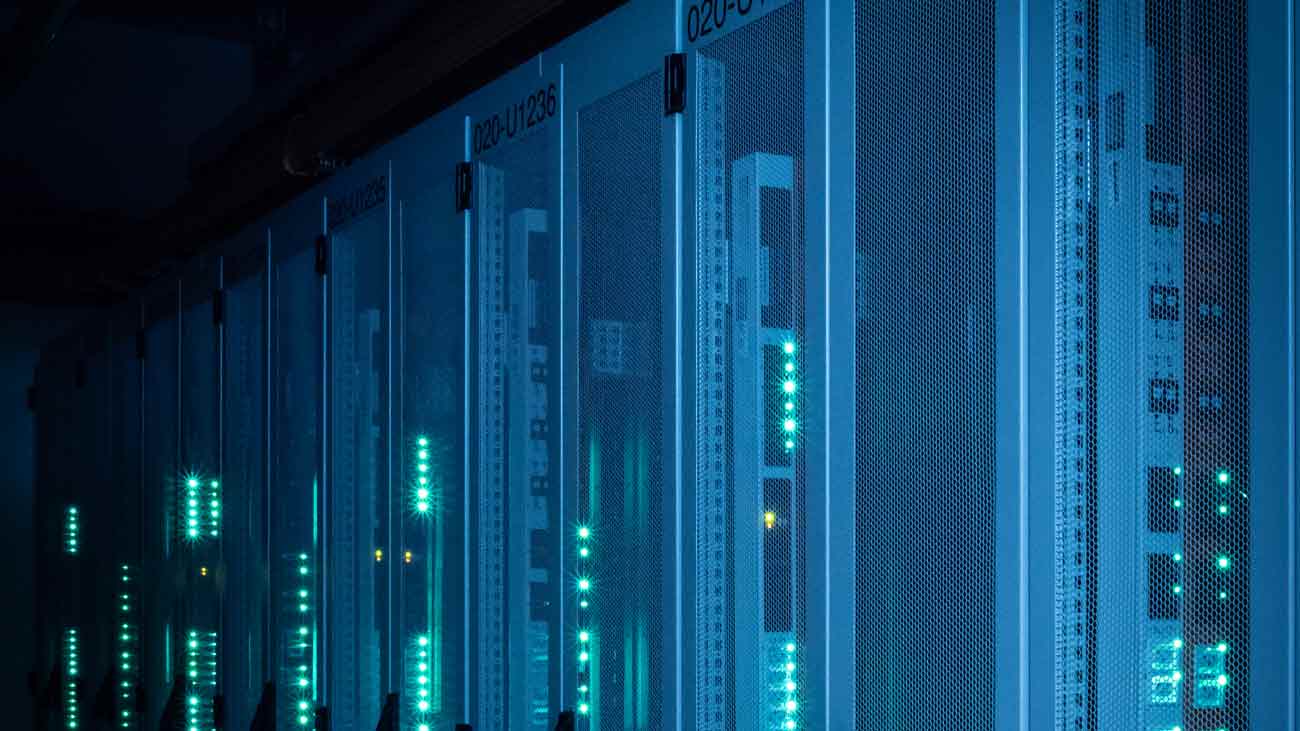More and more data – What about the power?

Focus on climate-friendly energy
Data centers play a central role in an era in which digitalization is permeating all of our lives. They are the foundation for data traffic and are becoming the lifeline of our increasingly digitalized world. But this requires both considerable investment and enormous effort in terms of infrastructure and energy. As a result, data centers are at the forefront of digital transformation – creating tension with the limitations of the power grid.
Energy demand is increasing inexorably
Driven forward by artificial intelligence, edge computing, streaming, online retail, autonomous driving, 5G, and virtual reality, data volumes are exploding all over the world. According to information from the European Commission*, the power consumption of data centers in the EU amounted to 76.8 TWh in 2018. It is estimated that this will increase by 28 % to 98.5 TWh by 2030. Skeptics consider this estimate to be too low. In 2022, the power demand of data centers already amounted to between 1 % and 1.5 % of the electricity generated globally. The state of Virginia – the world’s largest market for cloud computing infrastructures – already needs almost as much power as the entire country of France.
Data centers that provide the computing, storage, and transmission capacities therefore must grow to meet demands. The extent of this future growth remains uncertain. Certain is: It will be far more than anything seen before, as the boom has only just begun. Artificial Intelligence (AI) applications will once again significantly increase the demands on data centers – and thus also their power consumption. According to estimates, AI-generated energy consumption is expected to increase by 25 to 33 % annually between today and 2028.
Data centers = climate killers?
The data center boom is causing environmental pollution and a considerably higher electricity demand. In the United States, for example, this is causing increasing resentment. In Phoenix, Arizona, and Virginia, there have been protests against noise, water, and land use. Utilities are facing huge challenges: they need to provide more power to data centers while reducing CO2 emissions, which is torpedoing their efforts to retire fossil fuel power plants. The crucial question is: Are data centers the new energy guzzlers that will undermine sustainability efforts?
Constant power requires a mix of technologies
Let’s take the U.S. state of Virginia: At the beginning of 2023, Dominion Energy* presented a plan to double its capacity. Electricity generation would then be about the same as in France. The plan includes delaying the retirement of two coal-fired power plants and building up to seven new gas-fired plants. However, the company also claims to be investing several billion US dollars in offshore wind farms. But according to Dominion, offshore wind only generates 40 to 50 % of the electricity, and solar energy is just 20 to 25 %. That is not enough, so utilities have begun to build huge battery systems. But in comparison to total consumption, the battery systems are small and can only replace the grid for a few hours at a time.
New approaches to power supply
Data center operators also state that they are committed to lower emissions and more renewable energies, as well as helping to finance green energy. However, they cannot easily cover their own electricity needs from renewable energies. This is because they consume power around the clock, even when there is no wind or sunlight available. To compensate for this, data center operators are working on several new approaches to supplying power, such as:
- Mini nuclear power plants: Small modular reactors (SMRs) and microreactors are to supply cloud computing and AI data centers with power. Like conventional nuclear reactors, both are based on the same principle but are expected to be easier to build and transport.
- Nuclear fusion reactors: Compared to a nuclear fission power plant, a nuclear fusion power plant could deliver large amounts of electricity with significantly lower fuel consumption, better plant safety, and less radioactive waste.
- Natural gas fuel cells: Powering data centers with natural gas fuel cells is another option for supplying power.
- Biogas plants: Biogas plants that generate energy from food waste are also emerging.
- Hydrogen fuel cells: Another idea concerns the supply of power with hydrogen. The technology could also be used to provide load-balancing services during periods of excess wind or solar power generation, storing the renewable energy as hydrogen.
- Geothermal energy: Compared to wind power and photovoltaics, this technology has the advantage of being able to generate constant energy around the clock and in all weather conditions. The potential for using geothermal energy is particularly high in Kenya.
Sustainable and reliable energy future
The answer to meeting the growing energy needs of data centers sustainably lies not in a single solution, but in a multifaceted approach that takes into account the different starting points and challenges that we face. In addition to the question of energy generation, the infrastructure of a country or region as well as the storage possibilities and capacities must be considered.
*Sources: EU Commission; Dominion Energy

